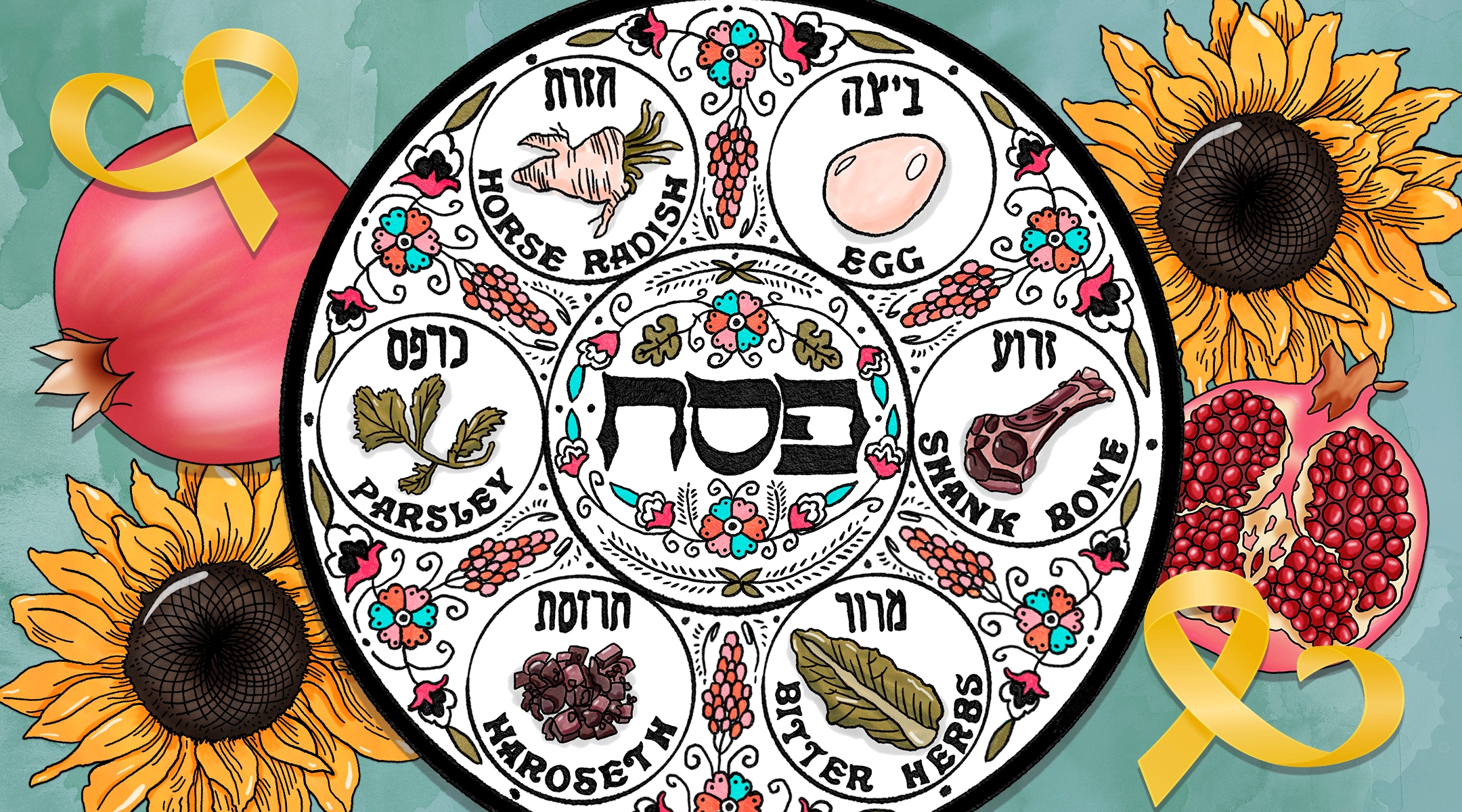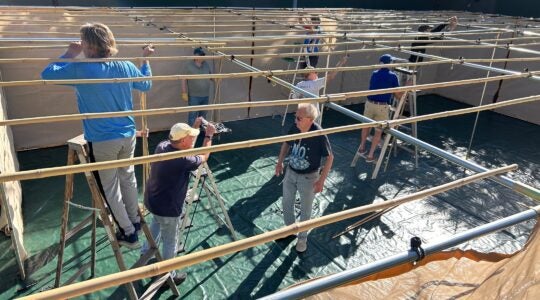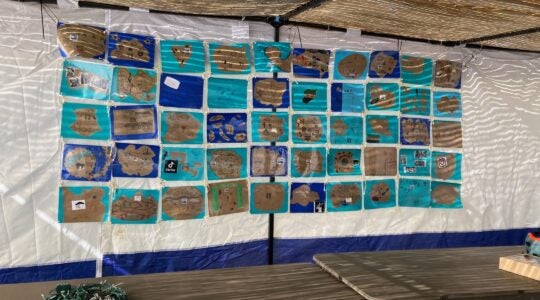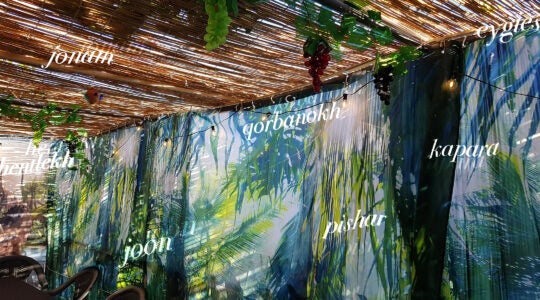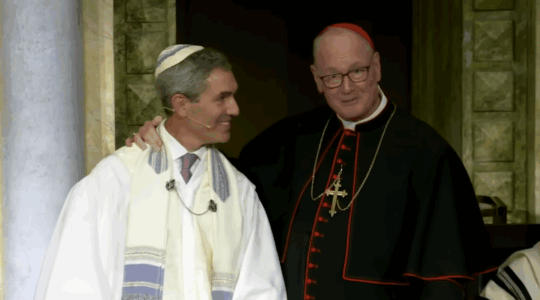(JTA) — As Jews around the world read the haggadah at their seder tables every year, they encounter a passage instructing them to see themselves as if they personally left Egypt. This year, some of them will also have on their seder tables a symbol of the perseverance of women traumatized in captivity.
In light of testimony that Israeli women have suffered rape and sexual assault at the hands of Hamas, Rabbanit Leah Sarna is encouraging seder participants to connect with the Israelite women of long ago by putting a mirror on their tables.
Those women, according to Jewish tradition, used mirrors in the course of reempowering themselves after facing sexual trauma — a way, Sarna wrote in the Jewish publication Lehrhaus, of “fighting to create Jewish babies” and reclaiming their autonomy.
“Recall the historic suffering and endurance of Jewish women past and present, and let us hope and pray that that same healing will someday be found by our brothers — and especially sisters — in Gaza being tortured today,” Sarna wrote.
Sarna’s mirror custom is one of many that rabbis, educators and Jewish organizations have put forward as Jews seek to use the ritual canvas of the seder as an opportunity to grapple with the Oct. 7 attack, the Israel-Hamas war and the estimated 130 hostages still held captive in Gaza.
The holiday, which begins Monday evening, comes as the war has passed the six-month mark, while Iran’s unprecedented attack on Israel has raised alarm throughout that country and beyond. Meanwhile, there is no immediate prospect on the horizon for the hostages’ release. In response, some of the new rituals add to the seder’s symbolism, while others seek to adapt age-old practices to the present day.
“Something that’s helpful and so beautiful about the seder ritual is this feeling of contextualization of Jewish oppression,” Sarna, a rabbi and educator at the Drisha Institute for Jewish Education in New York City, told the Jewish Telegraphic Agency. The oppression and resistance of Jewish women, she said, “has to be a part of that story.”
She added, “It’s a part of our story now. And it’s been a part of our story, I would say, since Egypt, and I think we need to write it in more explicitly than we ever have before.”
Sarna isn’t the only one placing women at the center of her ritual innovation. This year, Jewish Women International is encouraging families to add flowers to their seder plates, “as a way to stand in solidarity with the women of Israel — to honor the memory of those who we lost at the hands of Hamas and other terrorists, to give hope to those who survived, and to share our strength with those who are still held hostage.”
One Jewish website suggests adding pomegranates to the seder plate “as a symbol of standing with Israeli women” and offers a free two-page haggadah supplement on the topic. The practice of adding new items to the seder plate has been adopted in the past to draw attention to issues ranging from feminism to unjust labor practices.
Some are adapting rituals created for crises of recent decades. Next week, many seder tables will include an empty seat to represent the hostages — a gesture that was made last year on behalf of jailed Wall Street Journal reporter Evan Gershkovich and, before that, for Soviet Jewry. Some families will place a yellow ribbon on their tables, a symbol that has come to represent advocacy for the hostages’ release, while some will also wear yellow.
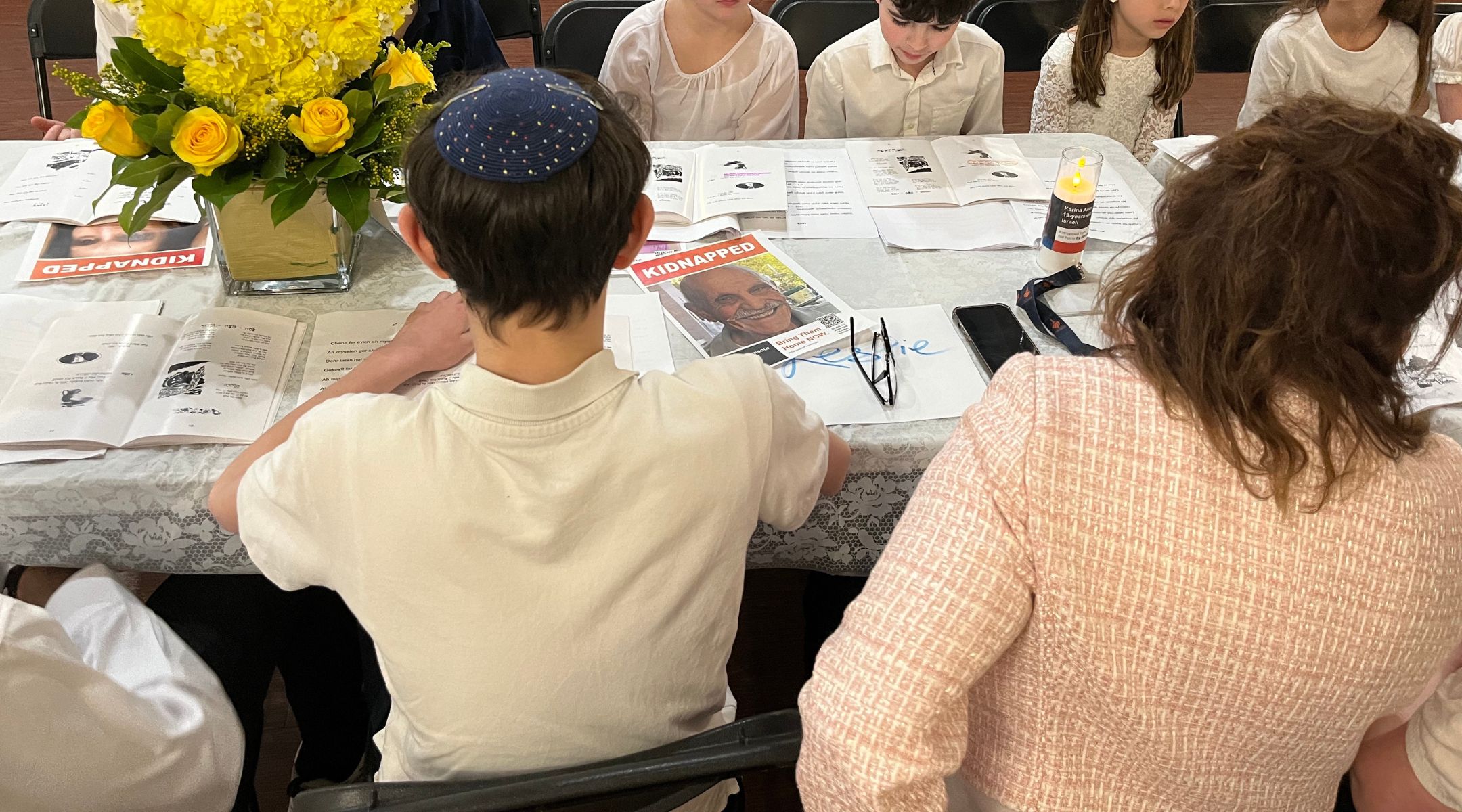
A model seder at a Jewish day school in New York City featured hostage posters and yellow flowers to represent those still held captive in Gaza. (JTA)
Others hope to allude to the hostages by taking away from the seder table, rather than adding to it. In an essay for JTA, Rabbi Elie Kaufner suggests using less matzah at seders this year to draw attention to the feeling of absence.
“With more than 130 of our people literally in captivity, the shock of seeing fewer matzot at the table, when we are used to seeing plenty, is appropriate,” Kaufner wrote.
The new rituals come alongside the perennial bevy of supplements to the traditional haggadah text that seek to make the holiday’s themes relevant to the present day. This year, a number of haggadah supplements aim to help families discuss Oct. 7 and its aftermath during their seders — from reimagining the “Four Questions” to reflections on other central Passover texts like “Dayenu” or the admonition that in every generation an enemy will attempt to destroy the Jewish people.
Rabbi David Lau, the chief Ashkenazi rabbi of Israel, shared a Passover prayer for the release of the hostages, meant to be recited before that passage. The prayer asks God to “bless and protect our captive brothers and sisters,” return them “in peace to their families and homes” and “plant brotherhood, peace and friendship in the heart of all.”
Others encourage adding new meaning to existing Passover customs.
In a blog post for the site Ritualwell, Rabbi Judith Edelman-Green suggests inviting seder attendees to write their own interpretations of the Ten Plagues. For blood, Edelman-Green writes, one could think of “the young women and men who were brutally murdered at the Nova Festival” on Oct. 7. For darkness, “Where has Hope gone? Where is the Holy work of peace between peoples? Where is the government who takes care of her citizens?”
Edelman-Green also offers a new way to think about the four children discussed during the seder. Instead of the traditional characterizations — wise, wicked, simple and the child who does not know how to ask — she suggests others, including a brave child to represent those who fought in the war, or “the daughter who could not scream” for the victims of Hamas’ sexual abuses.
The iCenter, a nonprofit focused on Israeli education, offers an online guide to 12 different moments in the seder, adapted for this year. “From a reflection of a mother and daughter who have just returned to their home in Kibbutz Sa’ad, to an exploration of art created to remember the hostages,” the website reads.
The hagaddah’s text recognizes that Jewish history repeats itself, something that Rabbi Danielle Upbin says makes new rituals superfluous.
“Regarding the current crisis in Israel, no additional items are necessary,” Upbin wrote in the Jewish Press of Tampa Bay. “The traditional Passover Seder already speaks volumes. The Haggadah itself is a flavorful dissertation on the dichotomy between destitution and resilience, darkness and light, captivity and freedom. The Haggadah calls us to read the current crisis into its pages.”
Sarna agreed that the seder is an inviting setting to discuss thorny topics. She said she recently heard from a friend who recalled being at a family gathering when two sisters began to argue about Israel.
“And then they said, ‘Oh, forget it. Let’s leave it for the seder,’” Sarna recounted.
“The seder itself describes, through the four sons, but also in other ways, groups of people who sit around having a seder arguing with each other and approaching things from really different perspectives, but they all come back to the table every year,” Sarna added. “And that’s the best we can hope for this year.”
JTA has documented Jewish history in real-time for over a century. Keep our journalism strong by joining us in supporting independent, award-winning reporting.
